Zoom Room in the US have created a useful visual guide to Dog Body Language.
It’s about five minutes long, and silent (until about four minutes in!).
Zoom Room in the US have created a useful visual guide to Dog Body Language.
It’s about five minutes long, and silent (until about four minutes in!).
It is Polite Pets Month, which focuses on how to recognise and treat anxiety, fear and phobias in our furred and feathered friends. Up to 20% of our pets suffer from anxiety and this can result in behaviours that are unacceptable like aggression, separation and noise phobias and toileting where you would rather they didn’t!
Finding out the true cause of these behaviours is essential to managing them effectively. Jumping on the punishment wagon can worsen anxiety driven problems.
Behaviour issues are best treated sooner rather than later so that you can maintain a happy family! Dr Helen is available for behaviour consults. Call reception to arrange a time.
 Dogs play an important part in many of our lives. With proper training from an early age, they can learn to interact with people in a positive way.
Dogs play an important part in many of our lives. With proper training from an early age, they can learn to interact with people in a positive way.
With this in mind the Australian Veterinary Association has developed a set of practical recommendations for vets and dog trainers on training methods based on positive reinforcement.
Reward-based training: a guide for dog trainers outlines the benefits of reward-based training and identifies some of the problems associated with alternative training methods. It also includes a number of case studies, examples of training and comprehensive list of references for further reading on the subject.
 Spare a thought over the festive season for our pets. Christmas is a fun time of year for humans but it disrupts our animals’ lives, causing stress and untoward changes in their behaviour.
Spare a thought over the festive season for our pets. Christmas is a fun time of year for humans but it disrupts our animals’ lives, causing stress and untoward changes in their behaviour.
Potential sources of stress include:
Many pets become anxious under these stresses. Their behaviour changes to cope with the stresses. These behavioural changes are usually temporary but occasionally turn into long-term, serious problems.
How can we reduce our pets’ anxiety this Christmas?
Reassure your pets in unfamiliar circumstances by allowing them to stay close to you and spending as much time with them as possible. If you have to leave them, give them something familiar like bedding or your shirt.
Provide a comfortable safe hidey hole with lots of fun things to do if visitors are expected or you are planning a party. Long lasting treats like stuffed Kongs and chew toys keep dogs engrossed and happy.
Avoid confronting a dog with anyone they fear. Children or big men frighten some dogs.
Don’t punish a frightened dog or make it face up to its fear. This usually makes an already tense dog more anxious.
Try not to initiate any more fears in your pet. A house suddenly full of noisy party-goers and no secure place to hide will make a timid dog frightened of more people.
Pheromones, naturally produced communicators, reduce anxiety significantly in many pets. ADAPTIL® (containing Dog Appeasing Pheromone) and Feliway® (containing a calming cat pheromone) are synthetic copies of the animals’ own natural pheromones. They reduce behaviour changes resulting from stress or anxiety.
Feliway replicates the feline facial pheromone that cats rub around their environment so they feel relaxed and at home.
ADAPTIL (Dog Appeasing Pheromone) replicates the pheromone the dam releases when suckling her puppies. It reassures dogs of any age, reducing anxiety and preventing fear and stress related behaviours.
If behaviour resulting from fear and anxiety is out of proportion to what is happening or causes long lasting problems then schedule an appointment with one of our vets. They will work through a programme of retraining or behaviour modification in conjunction with a prescription drug, appropriate for your pet.
Calling all cat carers! Mark Wednesday 21st September in your diaries. Hall Vet Surgery is holding a cat care information evening at the Hall pavilion.
Learn why your cats behave (or misbehave!) the way they do, how to care for your older cat and why regular checkups are vital to all cats’ health 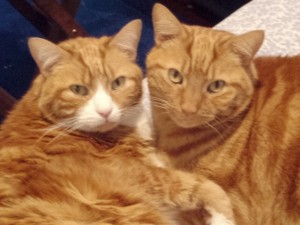 and comfort.
and comfort.
Entry is free.
We have heaps of give-aways and prizes for everyone and a delicious supper to cap the evening off.
Secure a seat by phoning 6230 2223, emailing vets@hallvet.com or telling one of our receptionists at your next visit.
Don’t miss out on a fun-filled chance to improve your cat’s quality of life!
Keeping cats indoors increases their life spans because they don’t become victims of cars, other animals, diseases or thievery. Unfortunately many cats are left alone without stimulation or a feline friend while their human companions are at work and school. Some of these cats develop behaviour problems or stress illnesses while others become dangerously obese from lack of exercise. Most of these latchkey cats suffer from Bored Cat Syndrome!
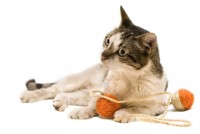 It is impossible for most people to stay home and entertain their cats all day. Enrich the home environment and give cats choices to avoid Bored Cat Syndrome:
It is impossible for most people to stay home and entertain their cats all day. Enrich the home environment and give cats choices to avoid Bored Cat Syndrome:
Fight obesity and stimulate your cat by making your cat work for his food:
 Many cats enjoy exercise wheels like these kitty treadmills
Many cats enjoy exercise wheels like these kitty treadmillsOther ways remedies for bored cats:
Meghan Herron, veterinarian author of a recent study on dogs aggressive to other dogs says “the number-one reason why dog owners take their dog to a veterinary behaviorist is to manage aggressive behavior. Our study demonstrated that many confrontational training methods, whether staring down dogs, striking them, or intimidating them with physical manipulation, do little to correct improper behavior and can elicit aggressive responses.”
The use of such confrontational training techniques can provoke fear in the dog and lead to defensively aggressive behavior toward the person administering the aversive action.
 Far better to use non-aversive training methods including:
Far better to use non-aversive training methods including:
With consistent and regular sessions using these positive methods, aggressive dogs slowly gain confidence in their owners and become easier to take out on walks.
“Canine aggression and other behavior problems are not a result of dominant behavior or the lack of the owner’s ‘alpha’ status,” Heron says, “but rather a result of fear (self-defense) or underlying anxiety problems. Aversive techniques can elicit an aggressive response in dogs because they can increase the fear and arousal in the dog, especially in those that are already defensive.”
These fear inducing, aversive techniques should be avoided:
Toilet training is fundamental to a new pup’s introduction to family life. Start it the minute you get home with her.
Choose a toileting place away from the deck, thoroughfares and busy spots like the clothesline.
Give her plenty of opportunities to go to this place. Take her out to this spot before she has time to find another: as soon as she wakes from a snooze, after food, after play or if she starts to sniff or circle suspiciously.
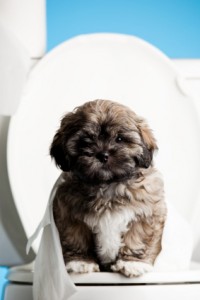 While she is toileting say “wee” or “potty” so that she learns to toilet on command. This is useful for the last walk before bed or when travelling.
While she is toileting say “wee” or “potty” so that she learns to toilet on command. This is useful for the last walk before bed or when travelling.
Positive reinforcement is the key to successful toilet training. Immediately reward her after she relieves herself. Praise her with a pat, “good girl” and, especially at first, give her a food treat. Try not to miss an opportunity for rewarding her for the right behaviour and she will soon learn to do the right thing.
Set an alarm to remind you to take her out again so she doesn’t make a mistake.
If she doesn’t go when you take her out, set a 10-15 minute alarm and keep her on lead, in a crate or with you to prevent any mishaps.
Short term confinement in a crate inhibits elimination and many pups will toilet as soon as they are released. Take advantage of this by rushing her to the chosen place as soon as you open the crate.
If she soils inside ignore her and clean the area with a non-ammonia based cleaning product like Urine-off so she doesn’t use the same place again.
Punishment for toileting inside will associate toileting near you with trouble. She will avoid you and toilet training will be delayed.
Dementia affects old dogs in the same way it affects some older people with declining brain function.
Signs of dementia:
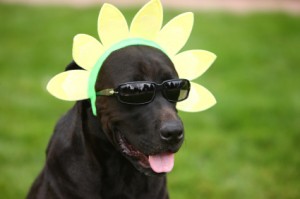 An aged dog exhibiting at least one of these signs more than once a week for at least a month has dementia.
An aged dog exhibiting at least one of these signs more than once a week for at least a month has dementia.
Dogs showing any signs are often severely affected within 12-18 months.
Treatment
Anti-oxidants delay and treat dementia. Antioxidants include Vitamin E, Vitamin C, Alpha-lipoic acid, L-carnitine and beta-carotene. Fruits and vegetables contain many of these.
Omega 3 fatty acids as found in fish oil or food supplements such as Nutricoat also help.
Hills b/d (brain diet) is a prescription diet that contains these nutrients.
Stimulate brain function and delay the onset of dementia with basic obedience training, scent discrimination tasks, safety-modified obstacle courses and hide and seek games.
Gentle walks or swimming delay loss of brain function as well as improve muscle function.
Petting, brushing and massage stimulate the nerves and brains of old dogs. New toys, blinking lights, walks in new areas with new smells, and meeting new animals and people boost an old dog’s brain function and enjoyment of life.
Indoor cats straining to urinate and not producing much but bloody urine have bladder problems. Some exhibit their frustration and pain all over the house.
The urinary passage of male or desexed male cats can block up with crystals and mucous. If your cat is tense and restless then he may have a blockage and you must contact a vet immediately before the bladder bursts.
Stress causes bladder inflammation or cystitis in some cats.
Kidney or bladder infections and bladder stones cause similar signs.
When you come to the vet surgery we examine your cat for urinary blockage and shock. Then we analyse your cat’s urine for infection, crystals and mucous plugs. We might order an X ray or ultrasound to rule out bladder stones.
If we find no sign of blockage, infection or stones then we conclude that your cat has Feline Lower Urinary Tract Disease (FLUTD) or Interstitial Cystitis (FIC).
Contributing causes:
No single cause of FIC has been identified. However, several factors have been shown to increase the risk of FIC. These include:
Stress
How can you prevent further episodes of FIC?
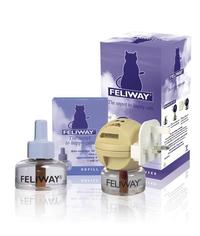 e tension.
e tension.